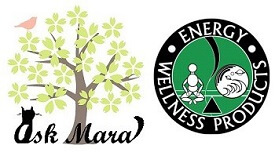Trigger point therapy, which was developed by Bonnie Prudden, a myotherapist, uses no drugs. If you have experienced unwanted side effects or severe reactions to pain medications or opioid medications, a drug-free pain relief option may be better for you. As you consider trigger point therapy, remember that your doctor should refer you to a Bonnie Prudden-trained myotherapist and you should prepare yourself for more than one session of this therapy.
What is Trigger Point Therapy
Let’s explore the Bonnie Prudden myotherapy treatment. Your CRPS symptoms may involve painful muscle spasms as your body works to avoid using the injured limb or muscle. In fact, the blood circulation to this part of your body has probably been decreased, which makes your CRPS symptoms even worse. Simply put, this method of therapy is a way of relaxing those muscle spasms, relieving your pain and improving the blood supply to that affected organ. Once your muscle has been freed from a spasm, your myotherapist will gently exercise that part of your body and show you how to repeat the exercises while you are at home.
This therapy is described as non-invasive, meaning no surgical instruments are put into your body. All the therapy takes place just outside your body. Using your leg as an example, you may be avoiding using it very much because it hurts so badly. In your efforts to avoid pain, the muscles around that injured area may go into spasm – making your pain even worse. In addition, because you are not using your leg very effectively, blood circulation slows down and your pain worsens even more.
If your doctor refers you to a Bonnie Prudden-trained mytherapist, the therapist will check your body for active trigger points, which are points that have become irritated, causing pain. These body areas are then identified so the myotherapist can begin working to end the spasm and relieve your pain.
How Does it Work
Trigger “point” therapy sprang out of trigger point “injection” therapy, in which small injections of a pain-killing medication are injected into the trigger points of your body. Using the same principle, the therapist isolates your trigger points and puts pressure on them.
Your myotherapist will tell you to come to his office wearing loose, comfortable clothing – sweats and a t-shirt, for instance. After he isolates your body’s trigger points, he has you lie down on a comfortable table so he can put pressure on those points. He uses his fingers, knuckles and even his elbows to put pressure for several seconds on the spasms he located earlier. After the pressure treatment is completed, he stretches the muscles slowly and gently, preventing them from returning to their previous spasm position. This may sound painful, but you do begin to feel relief, almost immediately. After he has exerted pressure on every trigger point, he gently exercises those muscles and re-teaches them how to move correctly after the muscles have been restored to a soft, relaxed state. Then, once he has taken your leg through the movement exercises, he shows you how to do these exercises at home to keep the muscles in your leg spasm-free and pain-free.
Why Does it Work
Some CRPS and RSD patients might react badly to pain relief medications or trigger point injections. The injections might cause pain that is too intense for them. You may have had similar experiences. Trigger point therapy may be a more-appropriate form of therapy for you.
Trigger point therapy interrupts signals from your leg’s nerves and the trigger point (point of irritation) back to your brain. This therapy was designed to stop the pain you feel and re-teach the affected muscles in your leg to move smoothly and correctly. After your myotherapist has applied strong pressure to the muscles affected by the pain and loss of blood circulation to your leg, the swelling and stiffness should be relieved. Blood circulation should also be improved, which helps to further reduce your CRPS or RSD symptoms.
As you practice the movement exercises at home, your range-of-motion improves and the neuromuscular pain you felt before decreases. Your leg’s flexibility also returns, as does your bodily coordination – that is, you stop limping and favoring your affected leg.
What Are the Risks and Are there risks
Yes, there are. The goal of physical therapy and myotherapy is to help you to return to normal use of your affected limb – in this case, your leg. Another goal is to reduce the pain you have been experiencing so you can return to a more-normal life.
However, if the therapist uses myotherapy incorrectly, you could suffer even more damage to the muscles in your leg. The wrong form of therapy and muscle manipulation can increase, rather than decrease your pain. The ultimate goal of any form of CRPS and RSD therapy is to relieve pain, restore movement and circulation and help you to use the affected limb and return to your daily activities of living. In other words, you should be restored to the fullest level of independence possible.
Talk to your doctor and ask him if trigger point therapy might be an appropriate form of treatment, especially if injections or pain medications are not appropriate for you. You and he know your body, injury and pain the best. You can also check out Bonnie Pruden’s book called Pain Erasure.
